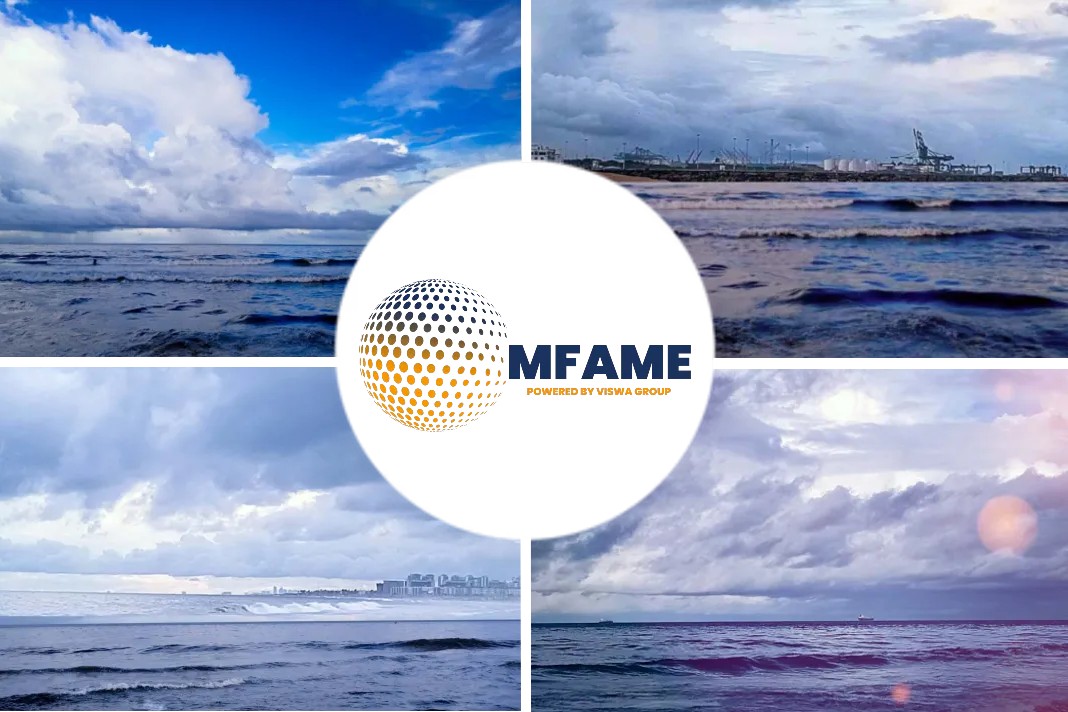- Hapag-Lloyd jumps on the scrubber band wagon before they ‘sell out’.
- The first retrofitting started with the 13,177 TEU Hamburg Express vessel and a further 9 such vessel retrofitting are on the pipeline in 2019-20.
- Only 1,550 of the ships estimated to have scrubber installed whereas IMO had originally estimated for about 4,000 ships.
- The ‘spread’ between HFO with scrubbers and LSFO, would be an advantage.
Hapag-Lloyd has belatedly joined the rush to install scrubber technology on its container vessels, ahead of the IMO 2020 0.5% sulphur cap says Mike Wackett in an article for The Loadstar.
Scrubber availability extremely tight
Speaking during the carrier’s Capital Markets Day this week, chief operating officer, Anthony Firmin, said that the availability of exhaust gas cleaning systems was now extremely tight.
“If you wanted to order a scrubber today they are sold out,” he said.
He added that the total capacity for scrubber installation was currently only around 500 a year – mainly due to a shortage of qualified engineers- and that by 1 January 2020 it is estimated that only 1,550 of the total global shipping fleet of some 60,000 vessels will have them installed.
The IMO had originally estimated that figure to be about 4,000 ships.
Onto the scrubber bandwagon
Starting with its flagship, the 13,177 TEU 2012-built Hamburg Express, Hapag-Lloyd will retrofit a further nine sister ships with scrubbers during 2019 and 2020, which will enable them to bunker with the cheaper 3.5% sulphur content heavy fuel oil (HFO) and still meet the 2020 regulations.
It is most likely the installations will be carried out during the routine dry docking of the ships, adding an extra two weeks or so.
Cost Effective Scrubbers
Hapag-Lloyd also has 17 so-called LNG-ready ULCVs inherited from its merger with UASC, but according to Mr. Firmin, the cost of retrofitting the ships with gas tanks could be some $25m a unit, substantially more expensive than the up-to $10m cost of scrubbers.
The carrier does, however, plan to convert one of the 15,000 TEU units to run on LNG as a pilot scheme.
Mr. Firmin said he regarded LNG as the mid-term solution to IMO 2020, versus the “attractive short to mid-term” advantage of scrubbers.
Bunker Cost Recovery
Hapag-Lloyd and a number of its peers, including Maersk Line, have until now been strong advocates for the industry to use the more expensive low-sulphur fuel oil (LSFO), when the IMO regulations come into force on 1 January 2020.
And in order to cover the $15bn estimated extra cost of consuming LSFO, ocean carriers are hoping to pass this on in full to their customers and have published bunker cost recovery mechanisms they propose to implement from 1 January 2019 – 12 months before the regulations become law.
Customers Positive feedback
Mr. Firmin admitted that hitherto the industry had been “fairly haphazard” in its bunker surcharge recovery, but claimed that Hapag-Lloyd’s new MFR (marine fuel recovery) mechanism, which replaces all its other bunker surcharges from 1 January 2019, had initially received “quite positive” feedback from customers.
The MFR proposes to separate the sea freight element from the bunker surcharge on all Hapag-Lloyd invoices from 1 January next year, including spot and FAK rates, Mr. Firmin advised.
Notwithstanding the attempts to persuade their customers to pay a new clean fuel surcharge, some carriers had already decided to equip their owned and chartered vessels with as many scrubbers as possible, including MSC, Evergreen and HMM.
How to make significant cost advantage?
MSC plans to install scrubbers on about 120 of its 520 vessel fleet and Evergreen has planned for the technology on 70 of its 200 ships, while the South Korean carrier has stipulated scrubbers in its twelve 23,000 TEU and eight 15,000 TEU order book.
With the ‘spread’ between HFO and LSFO estimate to be some $250 per ton, carriers operating ships with scrubbers, on the face of it stand to have a significant cost advantage over their competitors from 1 January 2020.
Maersk Line has also recently confirmed that despite its reservations it has allocated $80m for investment in scrubbers, which could equate to up to 20 of its 700 ship fleet.
Did you subscribe for our daily newsletter?
It’s Free! Click here to Subscribe!
Source: The Loadstar






















